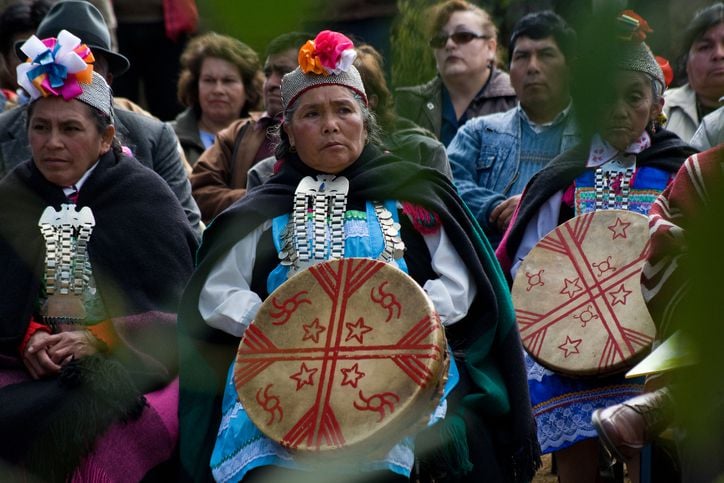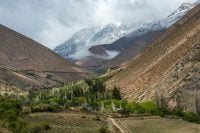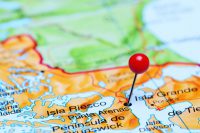While a trip to Santiago, the Chilean capital proves that the vast majority of city dwellers wear modern, Western-style clothing, this isn’t the case throughout the entire country. In fact, Chile traditional clothing ranges from the ponchos of the huasos (cowboys) to the ornate trarilonco of the indigenous Mapuche people.
Ponchos and traditional huaso dress
Formed from a single piece of material, ponchos aren’t unique to Chile and instead are worn by various different ethnic groups across Latin America.
In Chile, they’re conventionally used by the huasos or cowboys who inhabit rural areas in Central and Southern Chile and make a living from farming. They’re also used in competitions; during rodeos held in Rancagua, a city south of Santiago, riders are expected to compete wearing traditional huaso outfits, which include ponchos, knee-high leather boots with spurs, a sash around the waist and a flat straw hat with a round rim known as a chupalla.
 However, you’re most likely to see this style of Chile traditional clothing being worn on September 18 and 19 during the Fiestas Patrias celebrations where the whole country joins together to celebrate independence. During these days, the cueca, the national dance, is performed with men clothed in traditional ponchos and women wearing dresses with floral prints in red, blue and white – the colors of the Chilean flag.
However, you’re most likely to see this style of Chile traditional clothing being worn on September 18 and 19 during the Fiestas Patrias celebrations where the whole country joins together to celebrate independence. During these days, the cueca, the national dance, is performed with men clothed in traditional ponchos and women wearing dresses with floral prints in red, blue and white – the colors of the Chilean flag.
Traditional Mapuche clothing in Chile
The largest indigenous group in Chile, the Mapuche have striven to maintain their culture, despite centuries of European influences in the country and the continent. The Mapuche are particularly famed for weaving; they would conventionally use llama or guanaco wool and an upright loom to produce ponchos, blankets and bags. Nowadays, sheep’s wool is most commonly weaved, with natural dyes used to give color to these creations.
 Traditional Mapuche clothing is determined by gender, with women wearing a küpam, a square piece of cloth that hangs from the shoulder to the ankles and which is drawn together at the waist with a thick belt called a tariwe and fastened on the right shoulder using a brooch or tupu.
Traditional Mapuche clothing is determined by gender, with women wearing a küpam, a square piece of cloth that hangs from the shoulder to the ankles and which is drawn together at the waist with a thick belt called a tariwe and fastened on the right shoulder using a brooch or tupu.
Women also wear jewelry, including a trarilonco, a decorative head ornament and chaguay, silver earrings.
Mapuche men are dressed in makuñ, a black blanket-type garment similar to the poncho, a chumpiru or felt hat and sandals or ekota.
Where can you encounter Chile traditional clothing?
Rancagua, Bernardo O’Higgins Region
- Visit the National Rodeo Championships held annually in Rancagua in April to see traditional huaso dress as men compete in Chile’s national sport.
Fiestas Patrias, September 18 and 19 across Chile
- For a chance to appreciate national Chilean clothing, make sure you’re around for September 18 and 19 where fondas, large events serving food and drinks, are the best places for seeing the cueca performed.
Temuco, La Araucania Region
- Located in Mapuche heartland, the markets in Temuco are the location for buying traditionally weaved Mapuche ponchos and other crafts. To learn more about the Mapuche culture, visit the Museo Mapuche de Cañete in Cañete, a small town near Concepción.
No comments yet
There are no comments on this post yet.






Leave a comment